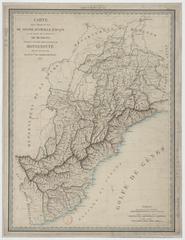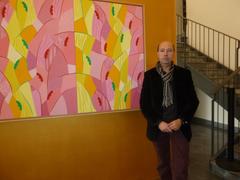Tempietto Boselli, Savona, Italy: Visiting Hours, Tickets, and Complete Travel Guide
Date: 14/06/2025
Introduction: The Tempietto Boselli and Savona’s Ceramic Legacy
Perched along the scenic Ligurian Riviera, Savona is a city celebrated for its centuries-old ceramic tradition and rich historical tapestry. At the heart of this heritage stands the Tempietto Boselli—a neoclassical gem dedicated to Giacomo Boselli (1744–1808), the master ceramist whose influence shaped the development of Ligurian ceramics. Clad entirely in maiolica tiles, the Tempietto Boselli is not only a striking architectural monument but also a symbol of Savona’s enduring artistic identity and its fusion of local craftsmanship with European artistic currents of the late 18th century (Visit Savona website, Fondo per l’Ambiente Italiano (FAI), Comune di Savona’s official site).
This guide details everything you need to plan your visit—from the history and cultural significance of the Tempietto Boselli to practical information on visiting hours, ticketing, accessibility, travel tips, nearby attractions, and frequently asked questions. Whether you are an art enthusiast, history lover, or curious traveler, immerse yourself in Savona’s vibrant ceramic tradition and discover one of Italy’s most unique historical sites.
The Historical Evolution of Savona’s Ceramic Heritage
Savona’s ceramic tradition has deep roots, tracing back to the 4th century BCE. Its strategic coastal position fostered a thriving commercial hub during Roman and Byzantine eras, reflected in the city’s medieval palaces, towers, and churches (Visit Italy). The city’s ceramic craft blossomed in the Middle Ages, with workshops in Savona, Albisola Superiore, and Albissola Marina forming the renowned “ceramic triangle” (Arte nei Dintorni).
The Blue-and-White “Bianco e Blu” Ceramic Style
Savona’s signature “bianco e blu” (blue-and-white) ceramics were inspired by Islamic and Chinese porcelain, arriving via Mediterranean trade. By the Renaissance, local artisans developed their own distinct style, famed for vivid cobalt blue motifs on white glazes. These ceramics adorned plates, tiles, vessels, and included decorative and heraldic designs, earning “Savona ware” international acclaim (Arte nei Dintorni).
The Role of Master Artisans: Giacomo Boselli
Giacomo Boselli stands out as a pivotal figure. Trained in Savona and Marseille, Boselli mastered and innovated ceramic techniques, producing refined neoclassical maiolica and porcelain. His works, often in collaboration with his wife Clara, blended local tradition with European influences, elevating Savona ceramics to new artistic heights (Wikipedia).
The Tempietto Boselli: A Testament to Neoclassical Ceramic Art
Architectural and Artistic Features
Completed in 1785, the Tempietto Boselli is a small temple-like building characterized by harmonious neoclassical proportions and a domed roof. Its exterior and entrance pergola are entirely clad in hand-crafted maiolica tiles, featuring neoclassical motifs—garlands, medallions, and geometric patterns—in soft blues, greens, and whites (Trucioli Savonesi; Visit Savona). The pergola’s pillars, each uniquely decorated, create a striking visual frame, especially in spring when wisteria blooms.
Clara Boselli’s painted contributions and the influence of French ceramic trends—such as “vert Savy” green and chinoiserie—can be seen in the decorative elements, reflecting the innovative spirit of the Boselli workshop.
Symbolism and Significance
The Tempietto was conceived as both a personal celebration of craft and a public display of Savona’s ceramic excellence. Its neoclassical style aligns local artistry with broader European trends, while its status as a “ceramic monument” is unique in Italy (Trucioli). In 2018, it was recognized as a “Luogo del Cuore” by the FAI, highlighting its role in Savona’s collective memory (FAI).
Conservation and Setting
Originally built in Boselli’s private garden, the Tempietto was relocated in 1930 to Giardini Dante Alighieri, near Priamar Fortress, for better public access. While its location in a tranquil garden offers a peaceful retreat, exposure has led to conservation challenges, prompting periodic restorations and protective fencing (Trucioli Savonesi).
Visiting Information: Hours, Tickets, Accessibility, and Travel Tips
Visiting Hours and Location
- Location: Giardini Dante Alighieri (also known as Giardini del Prolungamento), Savona city center.
- Hours: Public gardens are open daily from 8:00 AM to sunset. The Tempietto itself is viewable from outside the protective fence at all times when the park is open.
- Entry: Free of charge; no tickets or reservations required.
Accessibility
- The gardens are wheelchair accessible via paved paths. However, access inside the fenced Tempietto is restricted for preservation reasons.
How to Get There
- By foot: 10-minute walk from Savona’s historic center and Priamar Fortress.
- By public transport: Local buses to the fortress area; Savona train station is nearby.
- By car: Parking lots close to the city center and fortress.
Nearby Attractions
- Priamar Fortress: A vast medieval fortification overlooking the Ligurian Sea.
- Museo della Ceramica di Savona: Adjacent museum with extensive ceramic collections, including works by Boselli (Italy We Love You).
- Darsena District: Historic harbor area with cafes and artisan shops.
- Albisola Superiore & Albissola Marina: Neighboring towns famed for their ceramic workshops—part of the “ceramic triangle.”
Best Time to Visit
- Spring and early autumn: Enjoy the gardens in bloom, mild weather, and lower tourist density.
Practical Tips for Visitors
- Workshops: Many ceramic studios in Albisola and Albissola offer hands-on experiences; reserve in advance.
- Shopping: Authentic Savona ceramics can be purchased at certified boutiques—look for artisan signatures.
- Local cuisine: Try regional specialties such as “Chinotto Savonese,” often served in local ceramics (Visit Italy).
- Photography: Spring wisteria blooms provide stunning backdrops. Shoot in early morning or late afternoon for optimal light.
Frequently Asked Questions (FAQ)
Q: What are the Tempietto Boselli visiting hours?
A: The monument is in a public garden open daily from 8:00 AM to sunset.
Q: Is there an entry fee?
A: No, visiting the Tempietto and gardens is free.
Q: Can I go inside the Tempietto?
A: No, interior access is restricted to protect the ceramics; the structure is viewable from outside the fence.
Q: Is the site accessible for visitors with disabilities?
A: Yes, paved paths lead to the monument, though some uneven terrain exists.
Q: Are guided tours available?
A: Occasionally, especially during cultural events—check Visit Savona or local tourism centers for updates.
The Tempietto Boselli in the Community: Preservation and Engagement
Cultural Significance
The Tempietto Boselli is not only a monument to Giacomo Boselli but a symbol of Savona’s cultural identity and the city’s ongoing dialogue with its artistic past. As a “Luogo del Cuore,” it draws local and national attention, fostering pride and advocacy for its preservation (Ecodisavona).
Community and Institutional Support
Preservation has been a community-driven effort, bolstered by FAI campaigns, municipal oversight, and educational initiatives. Restoration projects, such as those supported by Lions Club Savona Torretta, reflect ongoing commitment to the monument’s care (Ecodisavona).
Enhancing Your Visit: Savona’s Broader Historical and Artistic Context
- Museo della Ceramica: Explore the evolution of Savona ceramics, with exhibits from medieval to contemporary pieces (Arte nei Dintorni).
- Ceramic triangle towns: Visit nearby Albisola Superiore and Albissola Marina for workshops, galleries, and artisan demonstrations.
- Local events: Look for the annual “Festival della Maiolica” and guided walking tours, offering deeper engagement with Ligurian art.
- Savona’s historic center: Medieval towers, Renaissance palaces, and Baroque churches enrich the urban landscape.
Sustainability and Responsible Tourism
- Respect the site: Do not touch or climb on the monument; photography is permitted from outside the fence.
- Support local artisans and businesses: Buying authentic ceramics and participating in local workshops helps sustain the region’s cultural economy.
- Sustainable travel: Use public transport where possible; follow all local guidelines on waste and recycling (Liguria Region Official Tourism Portal).
Summary and Visitor Recommendations
The Tempietto Boselli is a singular testament to Savona’s ceramic artistry and neoclassical architecture. Free to visit and accessible within the city’s public gardens, it offers a unique blend of history, artistry, and local identity. Combine your visit with the Museo della Ceramica, workshops in the ceramic triangle towns, and exploration of Savona’s historic center for a comprehensive cultural experience. Spring and autumn visits are ideal, and supporting preservation efforts ensures this iconic site remains an inspiration for generations to come.
For the latest updates, consult the Visit Savona tourism site, FAI’s Luoghi del Cuore project, and the Comune di Savona.
Reliable Sources and Further Reading
- Visit Italy
- Arte nei Dintorni
- Trucioli Savonesi
- Wikipedia: Giacomo Boselli
- Visit Savona: Tempietto Boselli
- Trucioli: Tempietto Boselli
- FAI: Tempietto Boselli
- Ecodisavona
- Visitriviera
- Italy We Love You
- Comune di Savona
- Liguria Region Official Tourism Portal
All hyperlinks direct to referenced sources for further reading and verification.

